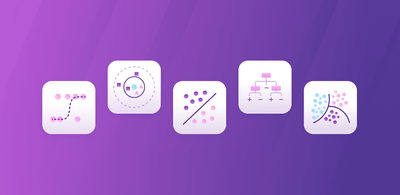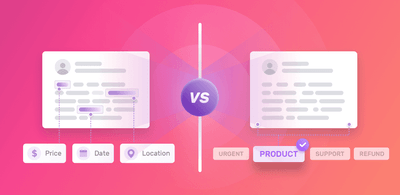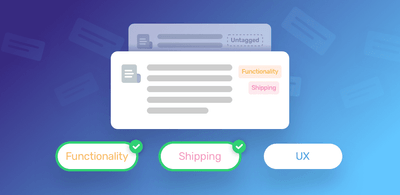Intent Classification: How to Identify What Customers Want
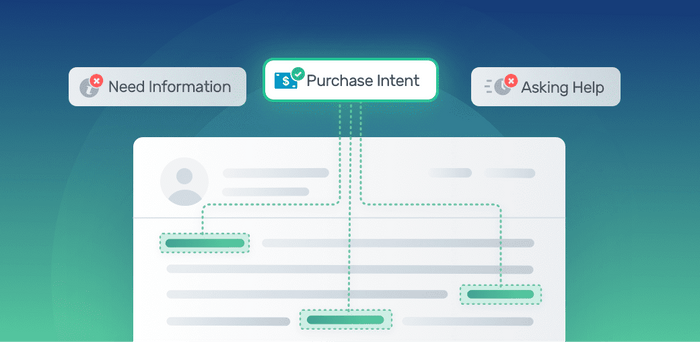
Quickly identifying intents can help your business grow. For example, if you can identify a potential customer’s intent to purchase early on, then you’ll have a better chance of converting them to fully-fledged customers.
Timing is everything.
Responding to potential customers within an hour of receiving a query increases the chances of you having meaningful conversations with key decision-makers, by nearly up to seven times.
But, if you receive thousands of customer interactions a day, detecting customer intent in your unstructured data is hard. The good news is that you can automate intent classification with artificial intelligence, so you can identify intent in thousands of emails, social media posts, and more, in real-time, and prioritize responses to potential customers.
In this post, learn more about what intent classification is, how it works and why it’s important. Then, learn how to create your own no-code intent classifier.
- What Is Intent Classification?
- How Does Intent Classification Work?
- Why Is Intent Classification Useful?
- Create Your Own Intent Classifier
Let’s get rolling.
What Is Intent Classification?
Intent classification is the automated categorization of text data based on customer goals.
In essence, an intent classifier automatically analyzes texts and categorizes them into intents such as Purchase, Downgrade, Unsubscribe, and Demo Request. This is useful to understand the intentions behind customer queries, automate processes, and gain valuable insights.
Ultimately, every customer interaction has a purpose, an aim, or intention. Whether they want to make a purchase, request more information, or unsubscribe, you should respond quickly to improve customer retention rates, loyalty and satisfaction.
How Does Intent Classification Work?
Intent classification uses machine learning and natural language processing to automatically associate words or expressions with a particular intent. For example, a machine learning model can learn that words such as buy or acquire are often associated with the intent to Purchase.
However, intent classifiers need to be trained with text examples first, otherwise known as training data.
If you’re analyzing customer emails, you might choose the tags Interested, Need Information, Unsubscribe, Wrong Person, Email Bounce, Autoreply, etc.
With your tags defined, you can begin to train your intent classifier with relevant text examples for each tag.
For example: “I tried to make a purchase through the site but I don’t know where to start, could you help me out? ” This email can be tagged as Interested.
The more examples you provide the model, the smarter your intent classifier will be since it has more information to learn from.
To take intent detection one step further, you can combine it with text extraction to identify specific data from text, such as locations, dates, company names, etc., that are related to a user's intent.
For example, if you receive this message:, “I want to book a flight from New York to Las Vegas, but my card has been declined”, an intent classifier would categorize it as intent to Book a Flight, and a text extractor would extract the entities New York and Las Vegas.
Why Is Intent Classification Useful?
Intent classification allows businesses to be more customer-centric, especially in areas such as customer support and sales. From responding to leads faster, to dealing with large amounts of queries and offering a personalized service, intent classification can be a key tool.
Let’s take a closer look at some of the benefits:
Take Advantage of Every Sales Opportunity
Automatically and quickly detecting intents to purchase is crucial for sales and customer support because it allows companies to take immediate action and transform leads into paying customers. The faster teams can detect purchase intents and respond, the better their chances of closing a deal.
Prospective clients appreciate fast-paced responses, with some expecting a response in less than 6 hours. Let’s say you receive a Facebook message asking for product availability. With an intent classifier, you can quickly identify this interaction as an interested client and contact them immediately to boost the possibility of turning this engagement into a sale.
Scale As You Grow
Even when companies are inundated with data, intent classifiers are able to pinpoint potential customers who have expressed interest and direct these specific queries to the sales teams. Machines work faster than humans, non-stop, and they don’t grow tired – so even as workloads increase, they’ll never miss a potential sale!
Consistent Criteria
Machines are consistent in the way they operate, processing data using the same parameters and criteria for every single instance. The consistency in criteria ensures that all the customer intents are analyzed under the same circumstances, applying the same standards, protocols, algorithms, etc. This greatly reduces errors and improves data accuracy.
Increase Conversion Rates in Sales Campaigns
As you deploy a marketing campaign and start receiving customer interactions, you can use intent classifiers to identify potential customers that show a ‘high intent’ to purchase and contact them immediately. Thus, your conversion rates skyrocket.
Get Analytics From Sales Campaigns
With clear intents identified automatically in your sales and marketing campaigns, you could easily create reports based on factual data about conversion rates, interested buyers, upsell opportunities, and much more.
How to Get Started with Intent Classification
There are ready-to-use, no-code tools, such as MonkeyLearn, that make it exceedingly easy to get started with intent classification.
We recommend that you use the pre-trained intent classifier to begin with. It’s able to categorize outbound sales email responses by Autoresponder, Email bounce, Interested, Not interested, Unsubscribe, and Wrong person.
Once you understand how to use a text classifier with MonkeyLearn, you can then create a custom intent classifier. By creating your own model using your own data, and defining intents tailored to your specific needs and business, you’ll be able to ensure higher accuracy when identifying customer intent.
It’s super easy to create your own model for intent classification! Follow these simple steps below, and you’ll be ready to pinpoint intent in no time:
1. Create Your Classifier
First, you’ll need to sign up to MonkeyLearn for free. Then, go to the dashboard and click on ‘create a model’. This action prompts you to choose a model type. For this tutorial, choose ‘classifier’.
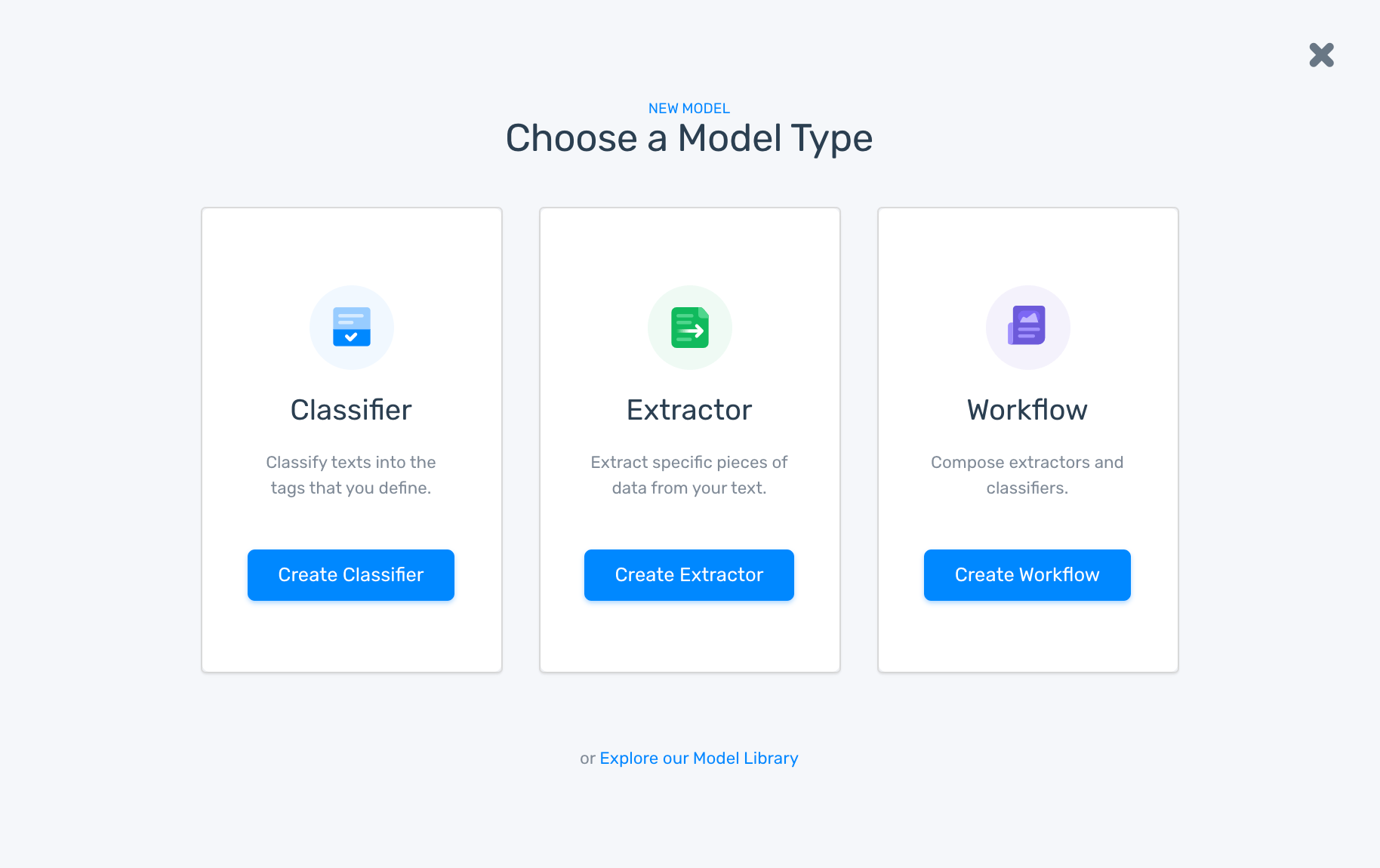
2. Select the Classification Type
There are three options: topic classification, sentiment analysis, and intent classification. Choose ‘intent classification’.
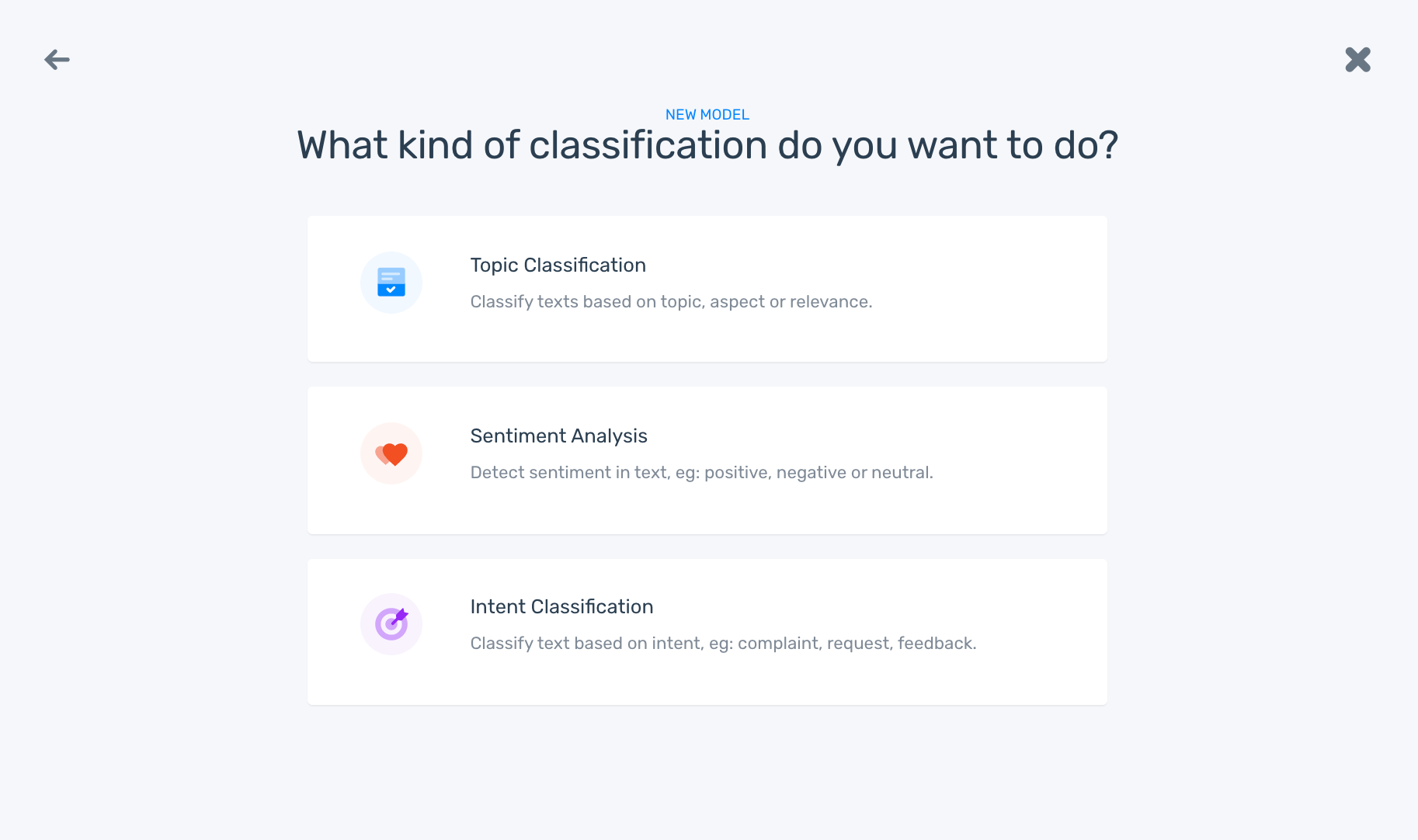
3. Import Data
Upload the data set you want to use for training your intent classifier. You can upload data using an Excel or CSV file.

4. Define 'Intent' Tags
After successfully importing your data, you can begin creating tags for your intent classifier. You need at least two to train your model – bear in mind that the more tags you add, the more training samples you'll need to train your model:

Tag Data to Train Your Classifier
As you tag text data, the model will learn from your examples and criteria, and its prediction level will increase – remember, the more training, the more accurate your model will be.
Test and Evaluate your Intent Classifier
Once you’ve trained your intent classifier, you can test it by going to the ‘run’ tab and typing a sentence into the text box, then clicking ‘classify text’ so your model can analyze and make predictions:
Put your Intent Classifier to Work
Once you're satisfied with your model's predictions, it's time to analyze your data. There are three ways to upload and analyze your data:
- Process data in a batch by importing an Excel or CSV file.
- Use one of the available integrations (e.g. Google Sheets, Zapier, Zendesk, or Rapidminer) to connect with MonkeyLearn.
- Or if you know how to code, you can use MonkeyLearn's API to analyze data programmatically.
Wrap-up
Intent classification can be your best ally when it comes to transforming leads into customers. By using AI to your advantage, you can analyze huge amounts of interactions from your users and potential customers, and automatically detect the intent behind each one.
As you automate this task, you can immediately take action and contact qualified leads in a timely manner.
And the best part – intent classification. Just sign up to MonkeyLearn for free and start using pre-trained models right away.
If you’d like to see how intent classification can help you sort your customer data, request a demo and our team will help you get started.

Federico Pascual
October 22nd, 2019


